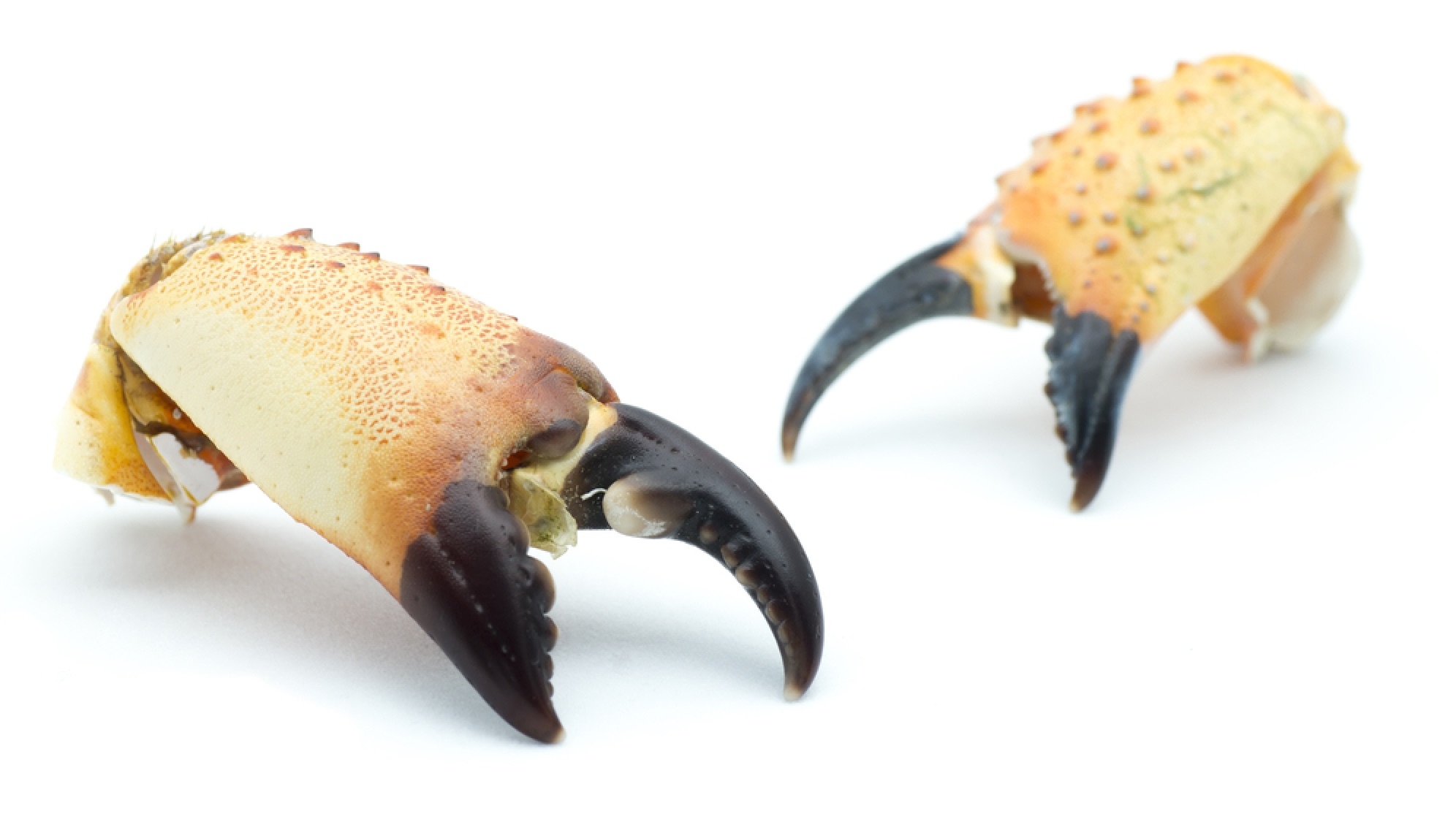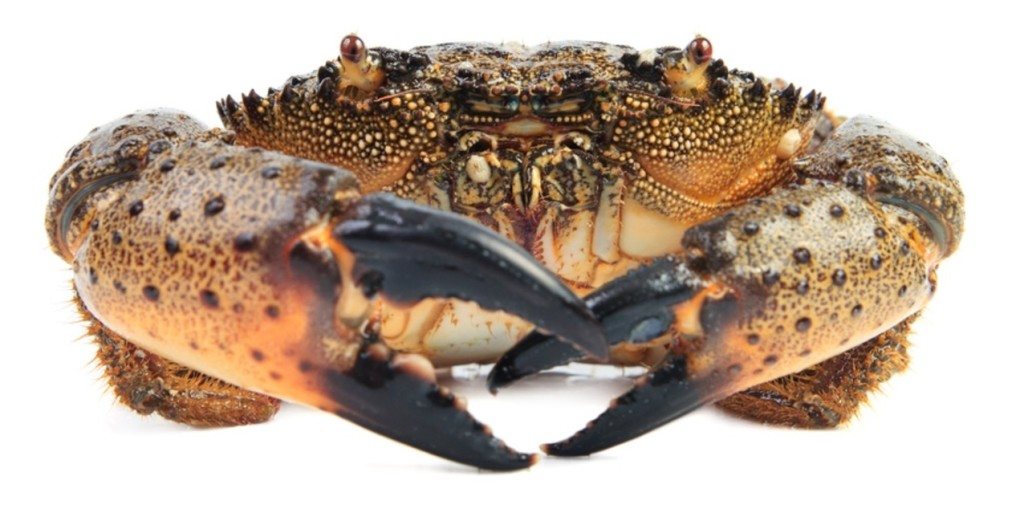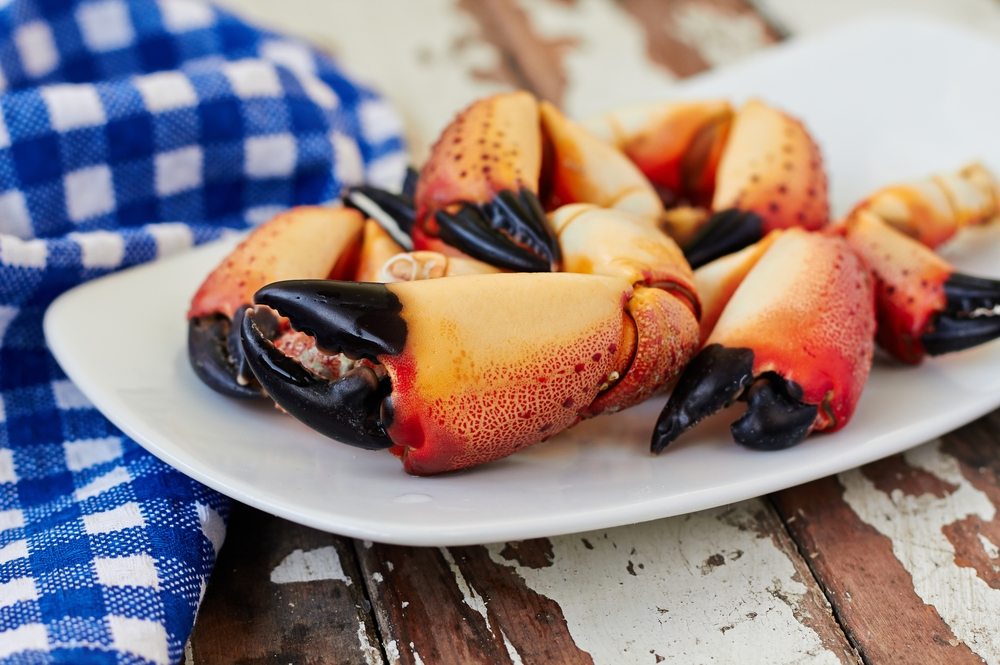How To Catch Stone Crabs On The Florida Grass Flats (Tips, Tricks, & Regulations)
- By: Joseph Simonds
- on
- Found In: *Species, Fishing Tips, Stone Crab

Floridians are a funny breed when it comes to weather.
Having warm weather (warm as in you can go swimming without a wetsuit) for about 10 months of the year in most parts of the state, most Floridians don’t know what to do once it gets cold (and by cold I mean under 50 degrees).
But one of the very best pastimes for fishermen that have to muster through those “brutal” Florida winters is catching stone crabs.
And if you have never had the pleasure of tasting the luscious meat of a stone crab dipped in butter, then you have missed out one of life’s best appetizers.

What is even worse than the fact that there are people in America that haven’t had the opportunity to try a stone crab, is that not many people know how to catch stone crabs.
Instead, you are forced to pay crazy amounts of money to eat them in restaurants every time you have a craving for excellent stone crabs.
Now before we get into how to catch stone crabs, please know that there are numerous ways to catch stone crabs (and catching them on the Florida grass flats is just one of many ways).
For instance, of the other most popular methods to catching stone crabs has you throwing your traps in deeper water (15-20 feet) around ledges and rocky structure.
And another method is doing it all by hand (for the real crazy folks…)
Note: If you have no access to water, or if you are just visiting Florida, or if you just have so much money that you would rather pay someone else to catch your stone crabs, you must visit Joe’s Stone Crab in Miami. They buy more stone crabs every year than any place else in the world. So much that how many stone crabs they are buying on a weekly basis, has a huge impact on the price of the crabs nationwide. They have been in business for over 100 years, so next time you are in Miami, check them out. Quite an experience.
Well, I am about to show you exactly how to catch stone crabs even in the shallow grass flats of Florida.

You will be shocked at how easy, how affordable, and how much fun it can be to go stone crabbing in Florida during the winter months.
And the best news is that you don’t even need a boat (you can drop crab traps from docks or wade them out as well).
It all boils down to 5 steps:
- Buy a crab trap (here is a crab trap that we like on Amazon for $25)
- Fill the bait box of the crab trap with dead fish (make sure to cut the fish up a bit to help chum the water and make it easier for the stone crab to get to it. Mullet, ladyfish, or any fish carcass from cleaning a fish works great)
- Find an area of grass that has some small patches of sand around it (and make sure it is an area that will have good current running through it)
- Drop the crab trap with the bait box opening on the bottom. Also, make sure the crab trap opening(s) are in the same direction the current is going
- Let the crab trap sit for at least 24 hours. Then check it, and follow the Florida stone crab regulations found here.
One incredibly important tip: Stone crabs can crush your fingers with their powerful claws, so be careful to always handle them from behind by grabbing their claws, not their body. And wear gloves! If you somehow do get a finger caught in a stone crab vice grip, the glove will alleviate some of the skin damage…
To download the Salt Strong PDF Guide called “How to Catch Stone Crabs”, click here now.
How To Catch Stone Crabs On The Flats [VIDEO]
Conclusion

Stone crabbing is an incredibly easy, fun, inexpensive, and awesome time that the entire family can get involved with during the Florida winter months.
And although there are numerous ways and places to catch stone crabs, this post shows you how you can do it even in shallow grass flats.
As you saw in the video, you don’t have to be an expert to catch a few stone crabs, and you certainly don’t need much equipment.
All you need is a $25 crab trap, some dead fish, an area to drop the crab trap that has stone crabs, and a little patience.
Make sure to download our FREE Stone Crab Report: “Tips, Tricks, and Regulations regarding how to catch stone crabs”
Correction from the video: Florida stone crab law does allow for both claws to be harvested if they both meet the minimum size requirements (click here to get all of the regulations, tips, and tricks on how to catch stone crabs), but we personally believe in always leaving one claw so that the crab can defend itself, and get food to grow the other claw back even quicker.
P.S. – If you think your friends would like this post, please Tag them or Share this with them.
Fish On and Crab On!
Related categories:
STOP WASTING TIME ON THE WATER!
Do what the “SMART ANGLERS” are doing and join the Insider Club.
Here’s what you’ll receive today when you join:
- Weekly fishing reports and TRENDS revealing exactly where you should fish every trip
- Weekly “spot dissection” videos that walk you through all the best spots in your area
- Exclusive fishing tips from the PROS you can’t find anywhere else
- Everything you need to start catching fish more consistently (regardless if you fish out of a boat, kayak, or land).










Where do you put your name on wire traps?
I thought you were suppose to catch stone crabs in deep water with rocky bottom? Channel edges etc…
Hey Nic,
Just as there are many different depths and areas to catch a snook, same goes for stone crabs. The reason we did the 4-10 foot grass flats is because almost anyone can do it. Meaning, there are many more easily accessible (and findable) places in Florida that have grass flats than there are deep water areas with rocky bottoms. You can even use a kayak to drop the traps off on the flats. And you would be shocked at how many stone crabs we have eaten that were plucked from the west coast Florida flats. Thanks for commenting bro.
Awesome. On the east coast we don’t have as many deep grass flats. So we target them in the channels. Learn something new every day. Love eating those things. I have friends that dive the bridges with kayaks and load up in an hour or too.